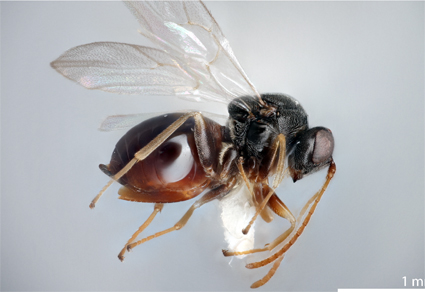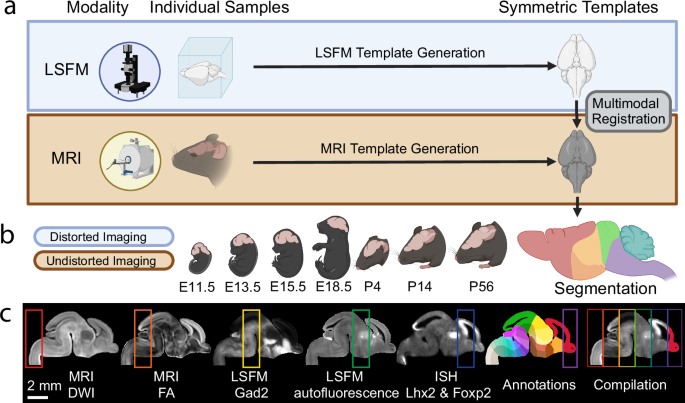2024-10-18 ペンシルベニア州立大学(PennState)
<関連情報>
- https://www.psu.edu/news/agricultural-sciences/story/catwoman-han-solo-newly-discovered-wasps-named-after-famous-thieves
- https://mapress.com/zt/article/view/zootaxa.5508.1.1
シジフォスの幸せを想像せざるを得ない 新種Ceroptres属22種の統合的分類学的特徴づけ(Hymenoptera: Cynipidae: Ceroptresini) One must imagine Sisyphus happy: Integrative taxonomic characterization of 22 new Ceroptres species (Hymenoptera: Cynipidae: Ceroptresini)
LOUIS F. NASTASI,CECIL N. SMITH,CHARLES K. DAVIS,ANNA K.G. WARD,GUERIN BROWN,Y. MILES ZHANG,SHANNON ROLLINS,CHRIS FRIESEN,CARLY M. TRIBULL,ANDREW A. FORBES,ANDREW R. DEANS
Zootaxa Published:2024-09-17
DOI:https://doi.org/10.11646/zootaxa.5508.1.1

Abstract
We describe new species in the genus Ceroptres Hartig, 1840 (Hymenoptera: Cynipidae: Ceroptresini) represented by voucher material sequenced by Ward et al. (2024). We describe 22 new species, all authored by Nastasi, Smith, & Davis: C. anansii sp. nov., C. anzui sp. nov., C. bruti sp. nov., C. curupira sp. nov., C. daleki sp. nov., C. dandoi sp. nov., C. demerzelae sp. nov., C. iktomii sp. nov., C. jabbai sp. nov., C. jarethi sp. nov., C. lokii sp. nov., C. lupini sp. nov., C. mallowi sp. nov., C. promethei sp. nov., C. sandiegoae sp. nov., C. selinae sp. nov., C. soloi sp. nov., C. songae sp. nov., C. swiperi sp. nov., C. thrymi sp. nov., C. tikoloshei sp. nov., and C. zorroi sp. nov. After our taxonomic treatment, the genus Ceroptres includes 43 species, all but three of which are known from North America. Among our new species are two reared from cecidomyiid midge galls, an association previously recorded but without valid taxonomic association. We provide new records for two additional previously described species; we record C. ensiger (Walsh, 1864) from Pennsylvania and confirm characters for the male, and we record C. lanigerae Ashmead, 1885 from Texas. We also examined several putative species corresponding to either C. cornigera Melika & Buss, 2002 and/or C. frondosae Ashmead, 1896, which we regard as a species complex that requires elucidation in future studies. To enable further studies on Ceroptres, we provide an updated key to North American females. Overall, we find that species of Ceroptres are host specialists associated with a single host gall species or several galls that are phylogenetically or ecologically related. We suggest that there are many North American species of Ceroptres, possibly hundreds, still awaiting collection and characterization.
カシノナガキクイムシに寄生する種分化は、新しい樹木の生息地、樹木の器官、あるいは胆の形態空間への移行と相関することが多い Speciation in kleptoparasites of oak gall wasps often correlates with shifts into new tree habitats, tree organs, or gall morphospace
Anna K G Ward, Y Miles Zhang, Guerin E Brown, Alaine C Hippee, Kirsten M Prior, Shannon Rollins, Nicolas Sierra, Sofia I Sheikh, Carly M Tribull, Andrew A Forbes
Evolution Published:07 November 2023
DOI:https://doi.org/10.1093/evolut/qpad218
Abstract
Host shifts to new plant species can drive speciation for plant-feeding insects, but how commonly do host shifts also drive diversification for the parasites of those same insects? Oak gall wasps induce galls on oak trees and shifts to novel tree hosts and new tree organs have been implicated as drivers of oak gall wasp speciation. Gall wasps are themselves attacked by many insect parasites, which must find their hosts on the correct tree species and organ, but also must navigate the morphologically variable galls with which they interact. Thus, we ask whether host shifts to new trees, organs, or gall morphologies correlate with gall parasite diversification. We delimit species and infer phylogenies for two genera of gall kleptoparasites, Synergus and Ceroptres, reared from a variety of North American oak galls. We find that most species were reared from galls induced by just one gall wasp species, and no parasite species was reared from galls of more than four species. Most kleptoparasite divergence events correlate with shifts to non-ancestral galls. These shifts often involved changes in tree habitat, gall location, and gall morphology. Host shifts are thus implicated in driving diversification for both oak gall wasps and their kleptoparasitic associates.


